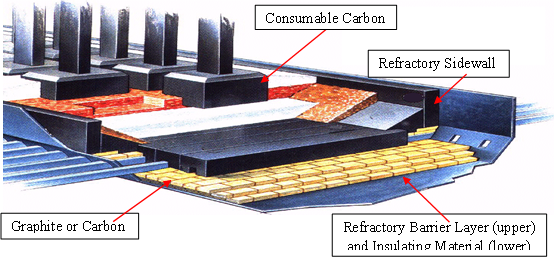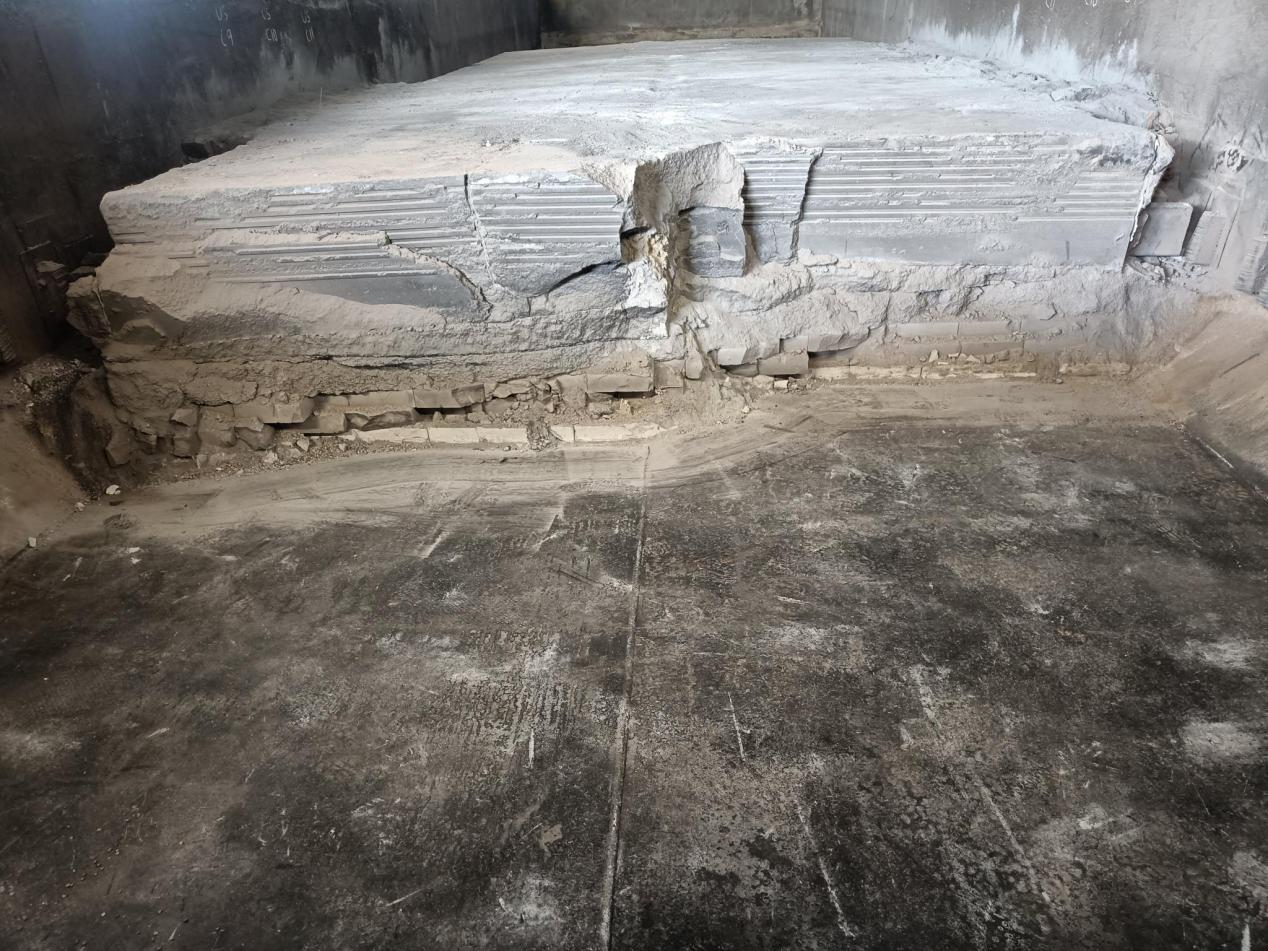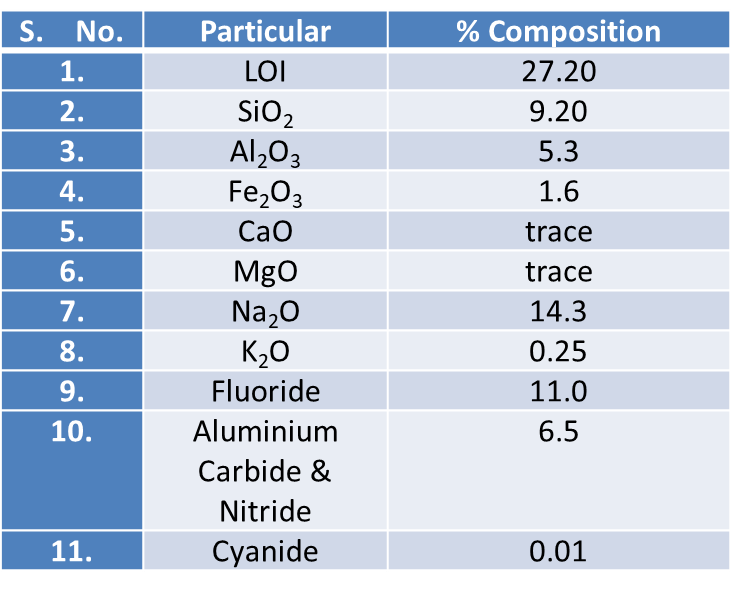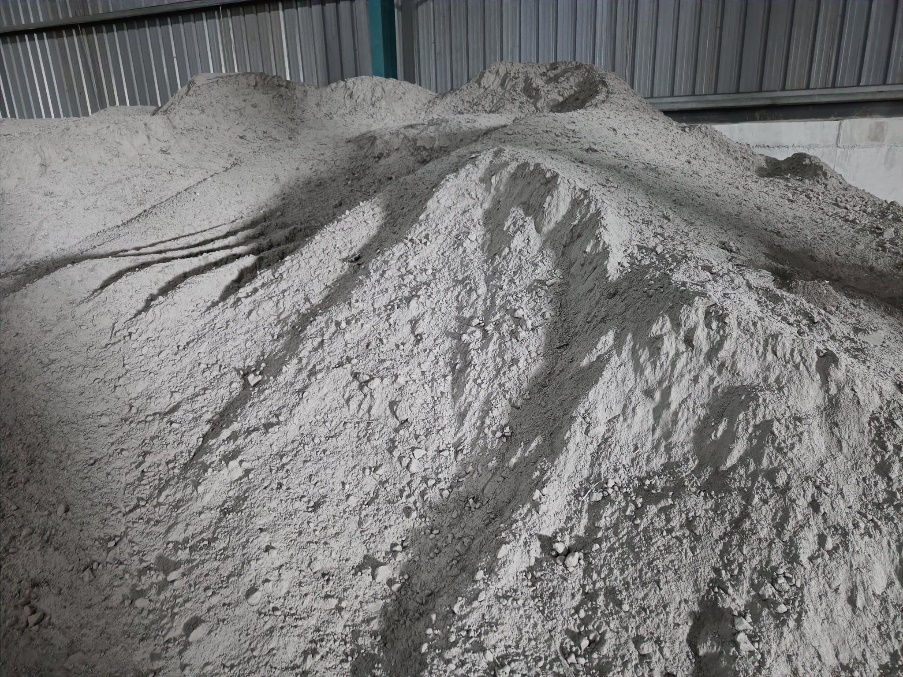


Nitin Kumar Tiwari (COO – Metal, Vedanta Aluminum Limited, Jharsuguda),
Shubham Kurvey (Innovation Engineer, Vedanta Aluminum Limited, Jharsuguda),
Swapnil Hirave (Head Lining Smelter-II, Aluminum Limited, Jharsuguda)
Abstract
Spent Pot Lining (SPL) disposal is a major environmental waste management challenge in the primary aluminium industry due to its hazardous nature and is only second to bauxite residue being generated during the aluminium-making process. Typically, 18-22 kg of SPL is generated per tonne of aluminium produced. Vedanta Limited has an annual capacity of 2.3 MTPA and is poised to ramp up to 3 MTPA in the near future. Thus, sustainable disposal of SPL waste generated through aluminium production is crucial to re-emphasize commitment towards ESG goals as well.
SPL is generated as a waste material and has two forms - carbon rich portion called "1st Cut" and a refractory-rich portion called "2nd Cut". SPL is classified as hazardous waste per CPCB guidelines and category 11.2 of Schedule I of HOWM rules, 2016. CPCB guidelines on the utilization of 1st Cut SPL by detoxification and as carbon mineral is widely adopted the practice and accordingly, several advances have been made in utilization as alternative fuel due to its inherent quality of having a wide range of GCV of the order of 3200-4500 kcal/kg. In contrast, the utilization of SPL's 2nd cut has many challenges. As per guidance, co-processing of SPL as mixed fines in cement production can support waste management in the primary aluminium industry by utilization as substitute primary raw materials.
The carbon portion of SPL as alternate fuel and 2nd cut as a replacement raw material in cement production is a viable option for sustainable SPL management. The refractory portion utilization in cement kilns will not only reduce raw material costs but also reduce energy requirements due to lowering of the melting point of clinker as this acts as a flux when added in a controlled manner. Another aspect is that it acts as a mineralizer that enhances the formation of complexes in the clinker.
Segregation and preparation of SPL material in aluminium plants as per requirement from cement production units, safe transportation of hazardous waste, pre-processing for addition in cement kilns, storage of material and handling at co-processing units with a controlled feeding system, are some of the challenges for having an integrated approach to utilize SPL refractory portion in cement production industry. Co-processing of SPL in the cement industry can make an important contribution to the “circular economy”, zero waste in primary aluminium production and eliminate environmental concerns through symbiosis.
1. Introduction
Sustainably disposing of hazardous waste is a major challenge in the aluminium industry. No “one fit for all” solutions are available across the industry, and varied interpretations of guidelines from regulatory bodies. Spent Pot lining (SPL) poses major environmental waste management challenges in the primary aluminium industry due to its hazardous nature. It is only second to bauxite residue being generated during the aluminium-making process.
With a strategic collaboration with cement units, aluminium industries can develop a self-sufficient circular economy with this waste-to-wealth approach. This can significantly reduce costs for cement units, conserve natural resources by replacement of raw materials with hazardous waste and contribute towards creating positive environmental and social impact.
Vedanta Limited has collaborated with two of the major cement producers in Odisha and Chhattisgarh states for the co-processing of the SPL refractory portion in the form of mixed fines. Both units were granted permission from SPCB-Odisha to receive SPL as mixed fines for co-processing in the Cement kiln of the Clinkeristion Unit in respective plants. A trial run has been conducted to co-process SPL mixed fines in a cement plant, per the guidelines of SPCB-Odisha. A team of NABL-accredited labs carried out environmental monitoring during the trial run.
2. SPL generation
SPL is a solid waste generated during the production of primary aluminium. Primary aluminium is produced via an electrolytic process called the Hall-Heroult process where the aluminium and oxygen in the alumina feedstock are separated by passing a large electric current through a molten bath mixture of cryolite, alumina and aluminium fluoride. This process occurs within carbon-lined steel pots (Figure 1) to produce molten aluminium metal.
The lining of the pot is typically made of two layers - an insulating refractory lining and an interior carbon lining. Over time, the cell lining wears and can form cracks that reduce its ability to hold the liquid metal in the cell. When the lining of the pot comes to the end of its life, typically after 4-7 years, it is classified as spent pot lining (SPL). SPL is typically a mix of all cell lining materials; however, there is a shift in breaking the lining into two separate cuts: the first cut (carbon lining), and the second cut (refractory lining). Although the exact composition of each cell lining can differ, typically SPL is composed of approximately 55% of the first cut carbon fraction and 45% of the refractory second cut. During the handling of SPL, a significant amount of fines are generated called “SPL mixed Fines”.

Figure 1

Figure 2
3. SPL waste management background
SPL is generated as waste material and has two forms- Carbon rich portion called “1st Cut” and a refractory-rich portion called as “2nd Cut”. SPL is classified as hazardous waste as per CPCB guidelines and category 11.2 of schedule I of HOWM rules, 2016, mainly due to the presence of toxic fluoride and cyanide that are leachable in water. It is corrosive as it exhibits high pH due to alkali metals and oxides.
SPL is required to be disposed of in an authorized disposal facility. SPL is stored in covered storage buildings for further processing and disposal. Dedicated SPL storage buildings located on or near the smelter site can store SPL from the point of de-lining until transportation to a treatment facility or other endpoint. The basis for planning of a SPL storage area should include comprehensive SPL characterization of the chemical and physical properties of the material as well as an assessment of the suitability of the proposed site.
Table 1 presents the typical composition of SPL is as below

Table 1
SPL 1st cut is carbon-rich with GCV in a wide range of 2100-3500 and hence post detoxification can be used as raw material in ferroalloy or cement industries. This material in the form of lumps of size 200-500 mm is transported to a treatment facility, where post-treatment carbon mineral fuel is generated. This can be used an alternate fuel added in quantities typically 1-2%.
SPL 2nd cut is stored in storage buildings and no viable options for reuse in this form. One of the solutions can be the processing of SPL fractions in cement kilns. The primary reason for processing is a reduction in raw material costs from using refractory as replacement raw material, the heating value contained in carbon and fluoride present in SPL. Fluorides present in SPL lowers the melting point of clinker, which saves input of fuel as well as certain fractions contributing to the clinker process. Other fractions act as mineralizers that enhance the formation of complexes that form the clinker.
The challenge in SPL refractory utilization lies in the form in which material is required by cement industries. With adequate preparation by separation of SPL lumps and fines, the material can be supplied to cement units and facility ease of handling and feeding.
4. SPL Coprocessing in the cement industry
Co-processing of spent pot lining (SPL) in cement production can support waste management in the primary aluminium industry, substitute primary raw materials in cement manufacturing, and eliminate environmental concerns through symbiosis. Co-processing has the advantage that it can be integrated into existing cement production facilities and does not require major investments. The high-temperature conditions in the cement kiln prevent the formation of dangerous compounds or destroy these, whilst at the same time binding minerals into the cement product, avoiding problems of residual hazardous wastes. The usage of SPL in cement manufacturing as an alternative fuel can decrease waste handling costs and reduce cement production costs. In this way, co-processing can make an important contribution to the “Circular economy” and “zero waste” in the primary aluminium industry and reduce the environmental impacts associated with SPL disposal.
Co-processing is defined as the reuse or recovery of mineral or energy content of waste materials like SPL while simultaneously manufacturing clinker in a single combined operation. Portland cement typically comprises about 2-6 % Al2O3, 1-6 % Fe2O3, 15-25 % SiO2, 55-75 % CaO, up to 5 % MgO, up to 1.5 % Na2O + K2O, 1.5-3.5 % SO3. SPL containing varying proportions of oxides also can provide useful additions to cement at minimal cost.
Carbon portion of the SPL can act as an alternate fuel replacing conventional coke used during clinkerisation and mineral content of SPL can act as alternative raw material partially substituting sources of Fe2O3, Al2O3, etc. SPL can be added to the feedstock in such a proportion that the desired mineralogical composition is also achieved.
For promoting the circular economy in the primary aluminium sector, NITI AAYOG has advised “Mandating use of spent pot line in cement industry as an alternative fuel” under regulatory and monitorable Circular Economy Actions. The aluminium industry shall practice this guideline to facilitate the utilization of SPL in the cement industry.
5. Coprocessing Trials
Vedanta entered trials with two major cement units in Odisha and Chhattisgarh respectively. MoU was signed both for trials and long-term strategic tie-up subject to successful trials.
SPL mixed fines were transported from Smelter to one of the major Cement units in Odisha, in dedicated and authorized vehicles. Vehicles were in completely covered (tarpaulin) condition with requisite safeguards.
This arrangement ensured no spillage of waste in accordance with provisions stipulated under Hazardous and Other Wastes (Management & Transboundary Movement) Rules, 2016. Received SPL-MF was stored in the well-ventilated covered shed having impervious RCC flooring within the premises to eliminate rainwater intrusion. There were garland drains all around the storage shed and the same was connected to the Effluent Treatment Plant (ETP) for further treatment and recycling.
Multiple samples of SPL mixed fines were tested in the lab. All samples were checked systematically with sophisticated equipment available in the plant laboratory.
 Figure 3
Figure 3
As per CPCB guidelines, SPL mixed fines must meet the concentration limits of Cyanide based on Toxicity Characteristic Leaching Procedure (TCLP) and Fluoride based on Soluble Threshold Limit Concentration (STLC), as specified in Schedule II of HOWM Rules, 2016. Both tests of the composite sample, have been conducted in NABL accredited lab and test results are well within the recommended limit (refer Table-2).
Table 2. Mandatory test results.

SPL mixed fines were used mainly to compensate the silica and alumina deficiency in cement raw mix. As a raw mix component, a better control can be expected due to improved homogenization and more dilution. However, SPL mixed fines was not allowed to grind in raw mill, due you to its characteristics, and a separate controlled feeding system was used to feed into kiln inlet.
The addition of SPL mixed fines started from 0.25% with gradual addition up to 1.5%. The kiln performance was challenging to maintain clinker quality and rated production, due to larger size and wide variation in the composition of SPL mixed fines.
In another trial with one of the major cement plants in Chhattisgarh, Vedanta Limited has started co-processing of SPL as mixed fines. The SPL material is used as alternate fuel and pre-processing is being done as per requirement of cement unit with size <10 mm.
The trials conducted showed good results with utilization of SPL as fines in cement production process. Various lab tests and onsite inspections were conducted to check material composition and quality of material being supplied. Various aspects were streamlined during the trial such as SPL material transportation, storage at processing facility, handling of material and controlled feeding.
The addition of material in the process was started from small quantities of 0.1-0.2% and increasing up to levels of 2%.
6. Major challenges and way forward
Variation in the composition of SPL is a major challenge and driving factor in % utilization and adjusting the process for cement units. However, the same can be addressed without any major investments and changes in set-up required.
Other major challenges are:
To address these challenges various steps were initiated, post successful trials and to supply material as per the requirement with increased volumes, Vedanta Limited has also initiated the set-up of mechanized processing units for SPL pre-processing.
7. Results and discussion
As the nation is poised for inclusive growth, industries should work together for the efficient use of natural resources by promoting the “Reuse- Recycle- Reduce” philosophy.
Hazardous waste from primary aluminium production can be utilized on a regular basis to address the environmental threats posed by these wastes. Trials conducted on various scales suggest cement units can benefit from SPL both as alternate fuel as well as replacement raw material.
Controlled addition of material in the cement production process without any major requirements for changes in set-up can be done to clear SPL stocks lying with aluminium smelters.
SPL material pre-processing at both Aluminium plants and Cement units is required. Necessary mechanization and equipment set-up can be done easily without any major investments.
The aluminium industry has enough stock of material to cater for the requirement of cement units and is ready to dispose of co-processing in cement units with long-term strategic collaborations.
A circular economy based on this waste-to-wealth approach will have positive impacts on environmental and social aspects, re-emphasizing ESG commitments laid down across the industry.
8. Reference
1. A-AL Muqabli, Feasibility study of SPL as raw material in cement manufacture process;
2. Sustainable Solution For Co-Processing Of SPL Mixed Fines In Cement Plants; Alka Mishra, Anand Pratap Singh, Rajiv Sadavarti, G V Ramakrishna, Arbind Singh; Dalmia Cement Bharat Limited